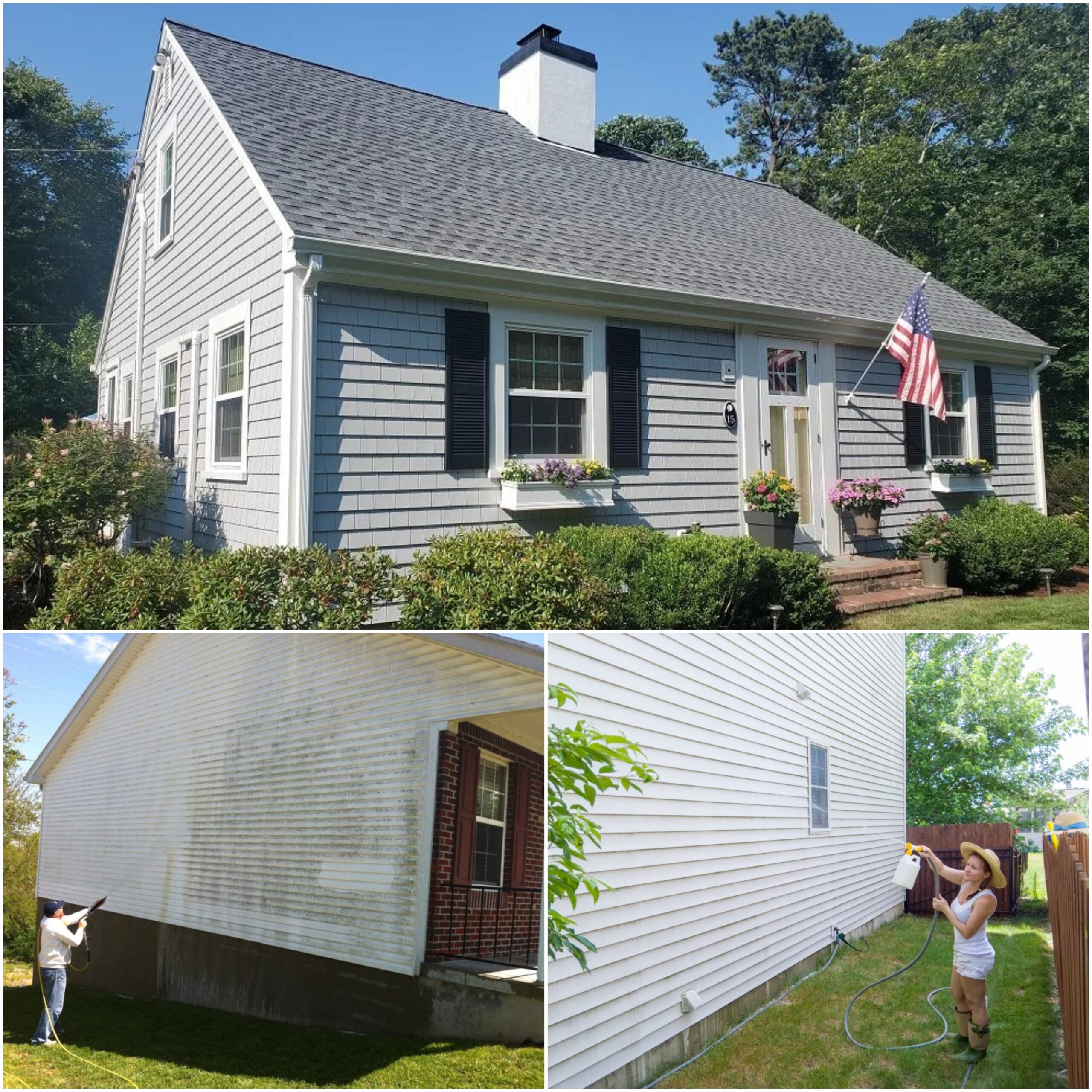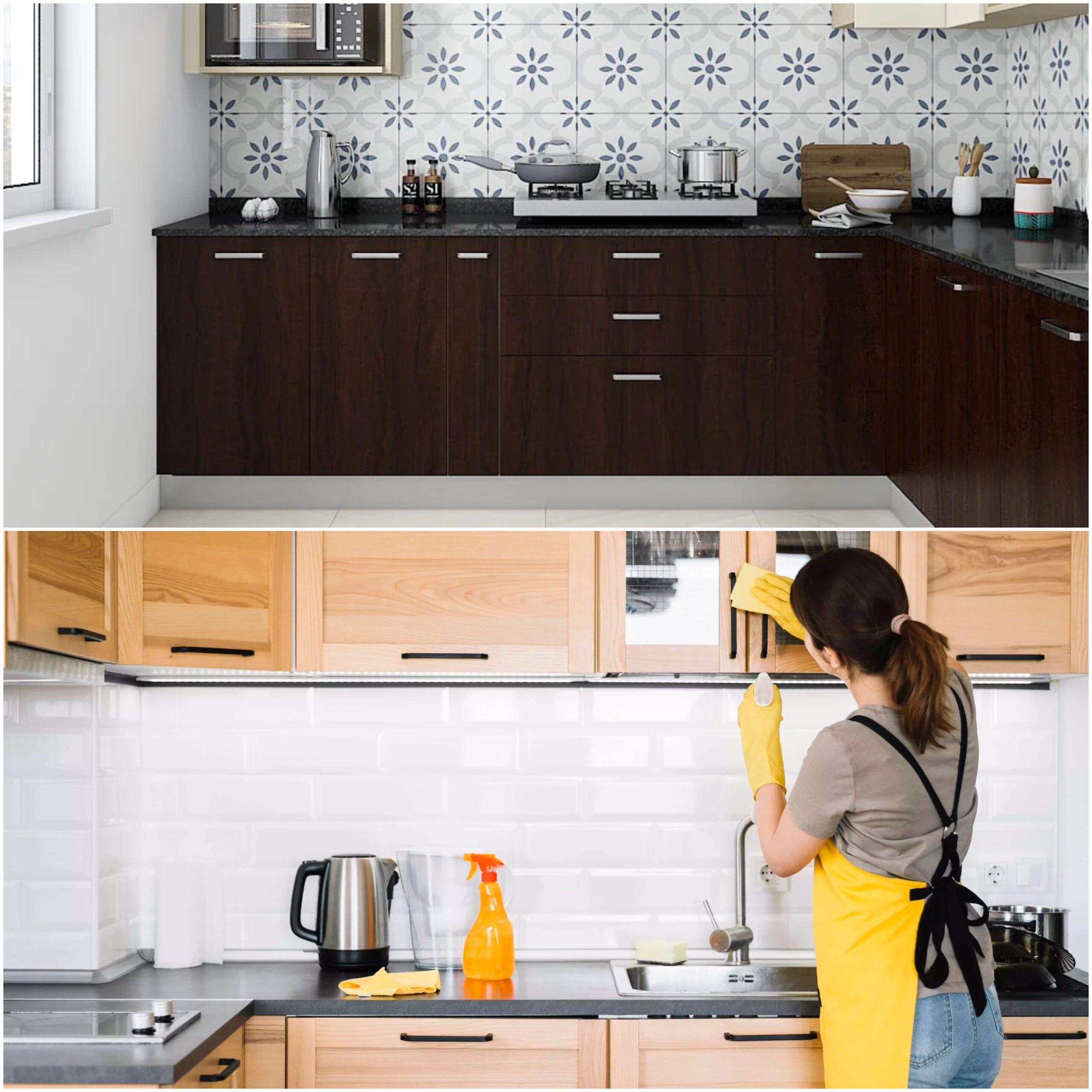It is easy to understand why home vinyl siding is one of the most popular options for American homeowners.
Home vinyl siding, which is popular for its durability, low maintenance requirements, and wide range of colors and patterns, may improve the appearance of almost any property.
It is a convenient choice for busy homeowners because it does not require heavy maintenance or frequent painting like other materials do.
Vinyl siding is made to last, but to maintain its best appearance and avoid problems like fading, mold, or dirt buildup, it still need routine maintenance.
Simple servicing can have a significant impact on your siding’s durability and the appearance of your house.
Let’s explore the importance of home vinyl siding maintenance, necessary equipment, detailed cleaning instructions, and solutions for typical issues like mildew and stains.
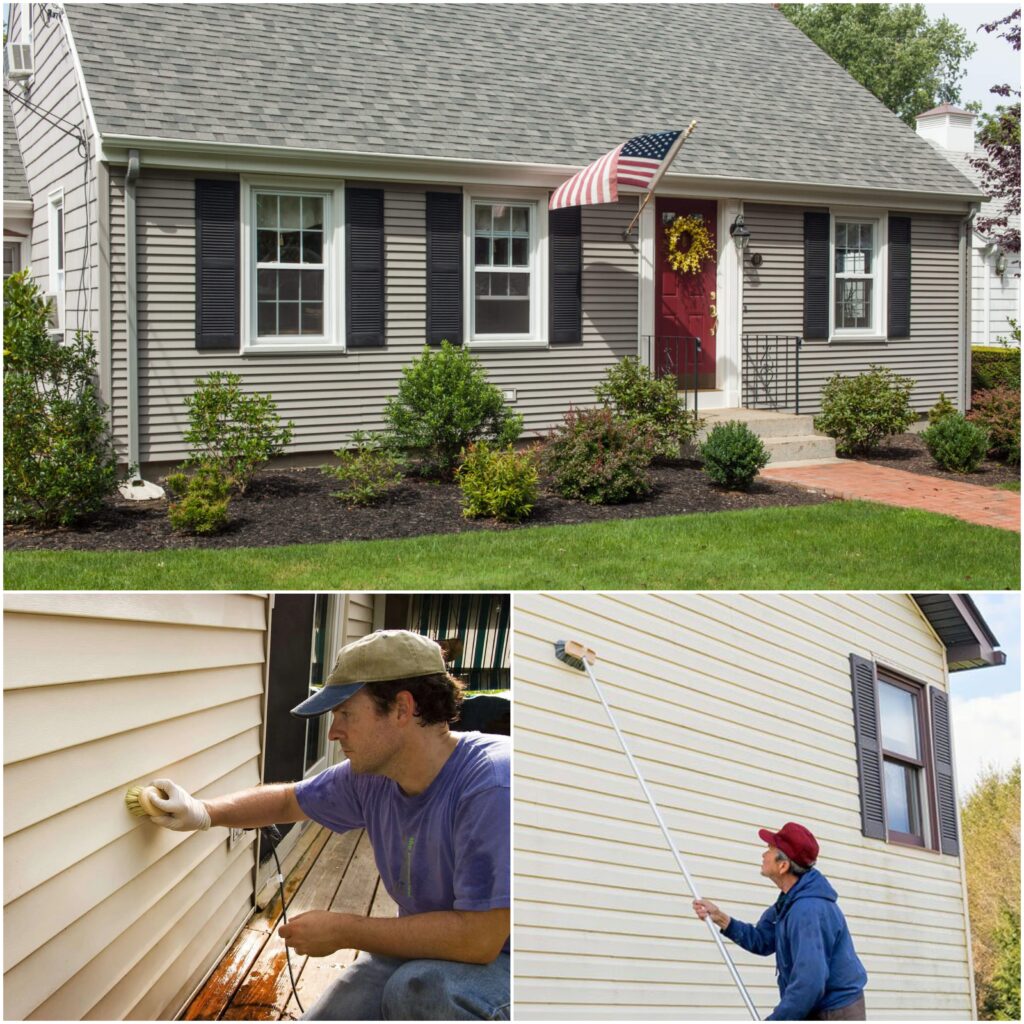
How to Care for Your Home Vinyl Siding?
Why Vinyl Siding Needs Regular Care?
1. Environmental Factors That Affect Vinyl Siding
Since home vinyl siding is made to last, environmental factors can affect how it looks and how long it lasts. Sunlight, rain, snow, and dust all contribute over time.
In this case, fading brought on by strong sunshine can make anything look uneven or drab. Moisture from rain and snow can cause mold and mildew if it is not controlled.
The original color of the siding may be masked by a layer of dirt that forms as dust and debris settle on the surface.
2. Preventing Discoloration, Warping, and Mold
Frequent maintenance helps avoid typical issues including mold growth, warping, and discoloration.
Seasonally cleaning your siding can help keep the outside of your house looking new and prevent stains from forming.
Regular maintenance lowers the chances of future, more expensive problems by identifying minor ones early.
3. Cost Savings of Regular Maintenance
Maintaining home vinyl siding can help you save money.
It is significantly less expensive to do routine cleaning and inspections than to replace or repair damaged areas.
You can extend the life of your siding, protect the exterior of your house, and maintain its curb appeal by dedicating a small amount of time and energy to cleaning.
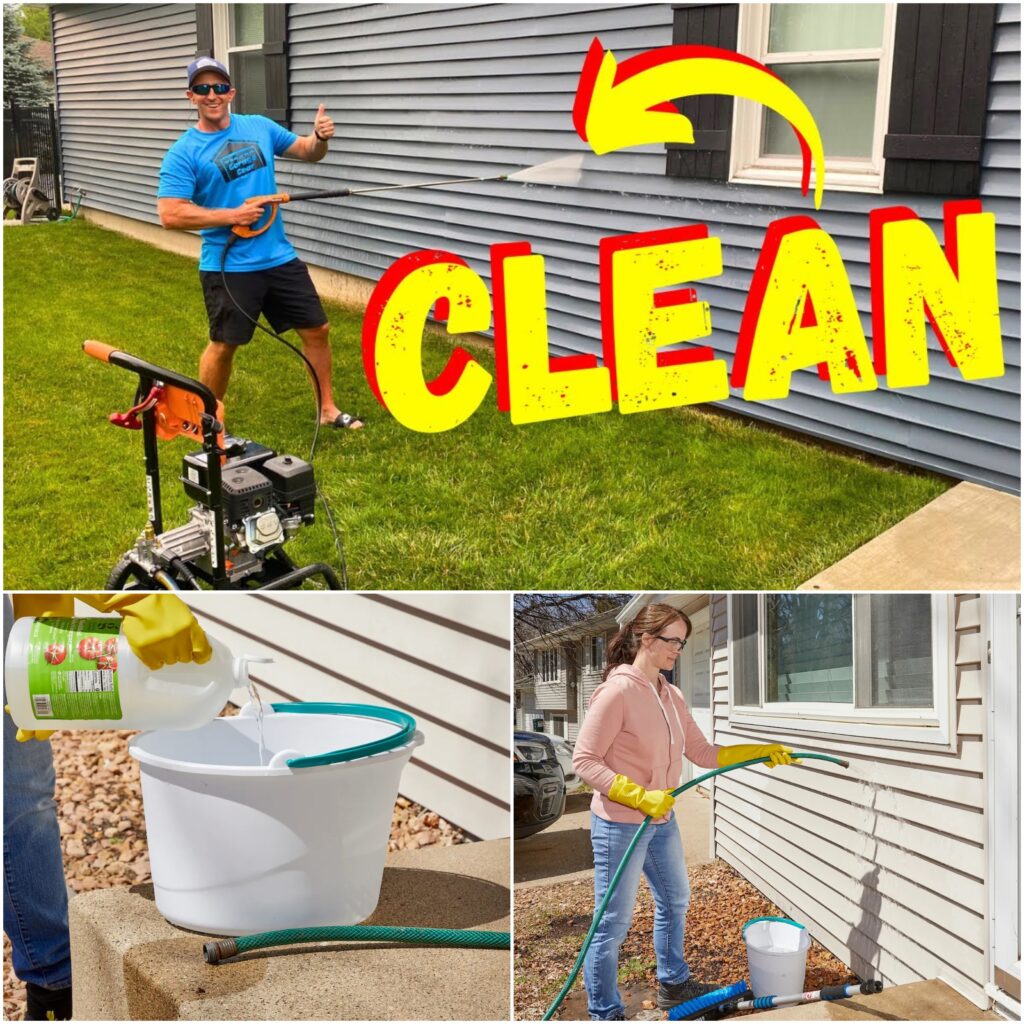
Essential Tools and Supplies for Vinyl Siding Care
1. Basic Cleaning Supplies
- Soft Brush
To remove dirt and grime without causing scratches to the siding, use a brush with soft bristles.
- Garden Hose
The water pressure required to rinse soap and grime off can be achieved with a garden hose fitted with a spray nozzle.
- Bucket
Combine cleaning solution and water in a bucket.
- Mild Detergent
The best detergent is one that is mild and gentle. To stay away from harsh chemicals, look for a vinyl-safe soap.
2. Optional Tools for Stubborn Dirt
- Soft Scrub Brush
A tiny scrub brush with delicate bristles might be helpful for removing stubborn stains by focusing on particular areas.
- Long-Handled Brush
You can access higher regions without a ladder by using a brush with a long handle.
3. Tips for Choosing the Right Products
Avoiding strong chemicals that can harm home vinyl siding is essential when choosing cleaning supplies.
Stay away of products that contain bleach, ammonia, or abrasive particles since they can cause discoloration or remove the siding’s finish
Before applying a new product to bigger sections of siding, always test it on a tiny, unseen part.
You can maintain your siding clean and in excellent condition without running the danger of harm if you stick to using soft tools and mild products.
Read: How to Keep Your Home Heating System Efficient?
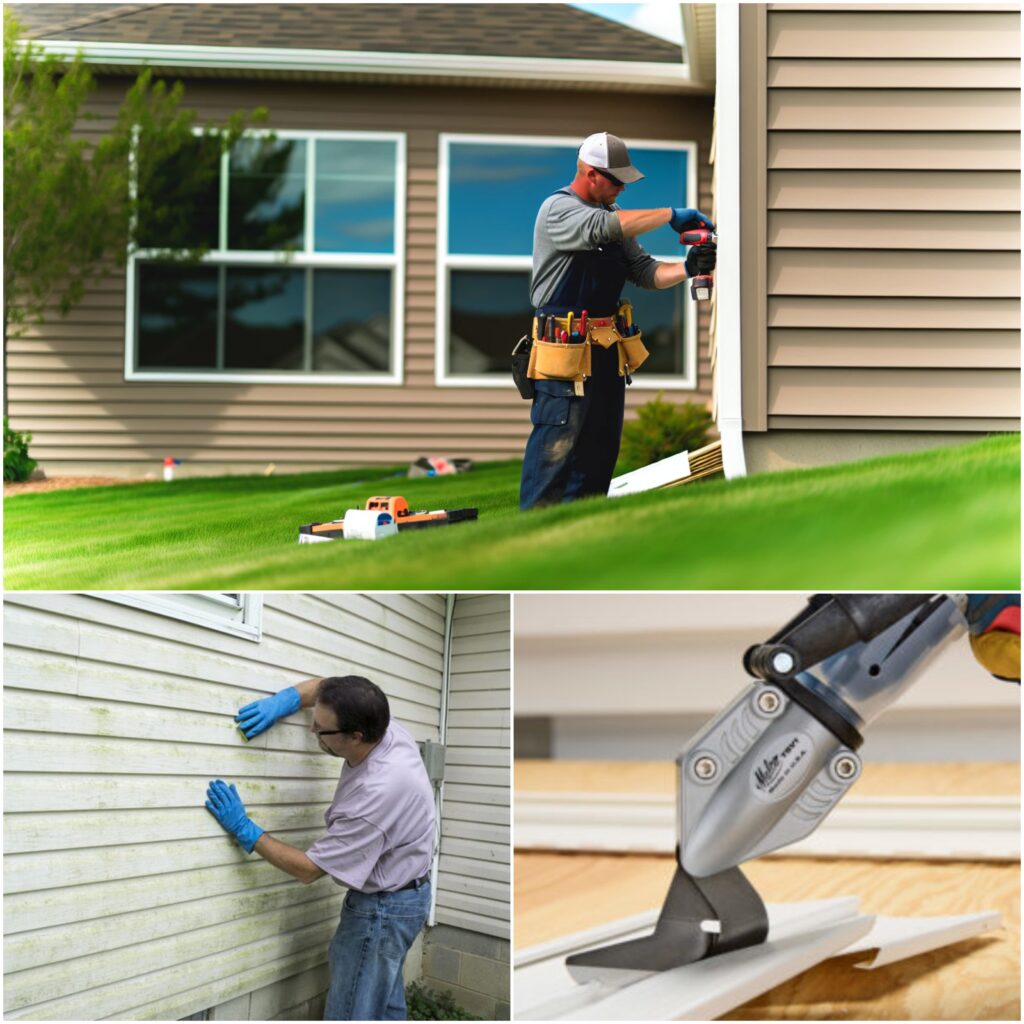
Step-by-Step Guide to Cleaning Your Home Vinyl Siding
Step 1 – Inspect the Siding for Dirt, Mold, and Damage
- Check the vinyl siding in your house with care before cleaning.
- Inspect for physical damage, such as cracks or loose panels, as well as any areas of dirt, mold, or mildew.
- By identifying these places first, you can determine where to concentrate your cleaning efforts and whether any repairs are necessary.
Step 2 – Rinse with a Garden Hose from Top to Bottom
- Rinse the siding from top to bottom with a garden hose.
- When you apply the cleaning solution, the debris won’t stick because of this first rinse, which helps get rid of loose dust and debris.
- Use a mild spray setting to prevent pushing water behind the siding, which can encourage the formation of mold.
Step 3 – Apply a Mild Cleaning Solution and Let It Sit
- As directed by the product, combine water and a mild cleaning solution in a bucket.
- Apply the solution to the siding using a sponge or soft brush dipped in it.
- To prevent the cleaner from drying too rapidly, work in tiny parts for optimal results.
- To remove any hard dirt, let the solution on the siding for a few minutes.
Step 4 – Scrub Gently with a Soft Brush
- Scrub the siding lightly with a soft-bristled brush, focusing on any unclean or discolored areas.
- Because vigorous scrubbing can scratch or harm the surface, try not to use too much effort.
- To properly remove dirt and stains, work in circular motions before moving on to the next area.
Step 5 – Rinse Thoroughly and Let It Air Dry
- After cleaning every area, use the garden hose to give the siding one more rinse.
- Because residual detergent will ultimately attract in more dirt, be sure you get rid of any soap residue.
- Allow the siding to air dry naturally after rinsing.
Expert Tips – Avoid Using Pressure Washers
- While pressure washers might seem like a speedy fix, overuse can harm home vinyl siding.
- Water under high pressure may push its way behind the side panels, causing moisture to build up and perhaps causing mold issues.
- For a safer and more efficient clean, use a mild garden hose spray.
Dealing with Common Stains and Issues
1. How to Remove Mold and Mildew Safely?
Home vinyl siding is at risk for mold and mildew, particularly in moist or shaded regions. You can use a simple white vinegar and water solution to safely remove them.
Apply the solution to the regions affected after mixing one part vinegar with three parts water in a spray bottle.
After letting the mixture sit for 10 or so minutes, gently clean it with a soft brush and then rinse it off with a garden hose.
Use a diluted bleach solution carefully for more difficult situations.
Rinse well after applying a solution of one part bleach to four parts water to the moldy spots and letting it sit for a short while.
To preserve the siding’s color, wear gloves and do not let the bleach rest for too long.
2. Tips for Treating Rust Stains and Other Tough Spots
It might be difficult to get rid of rust stains, which are frequently brought on by metal objects close to the siding.
Use a specialty rust remover that is safe for vinyl siding to get rid of rust and other stubborn areas, being sure to carefully follow the product’s directions.
If you would rather do it yourself, make a paste with a little lemon juice and baking soda, apply it to the rust stain, let it set for a few minutes, then scrub and rinse carefully.
3. Handling Fading and Minor Discoloration
Home vinyl siding may fade with time due to weather and sun exposure. There are ways to lessen the look of mild fading, even though it is frequently necessary.
To begin, give the siding a thorough cleaning to get rid of any dirt that might be highlighting the discoloration.
Consider using a vinyl-safe, UV-resistant siding paint to restore the color if fading continues.
If you are afraid of it then paint, you can improve the curb appeal of your house and deflect attention from areas that are a little faded by adding outdoor décor like shutters or fences.
Read: The Latest Outdoor Lighting Trends to Illuminate Your Yard
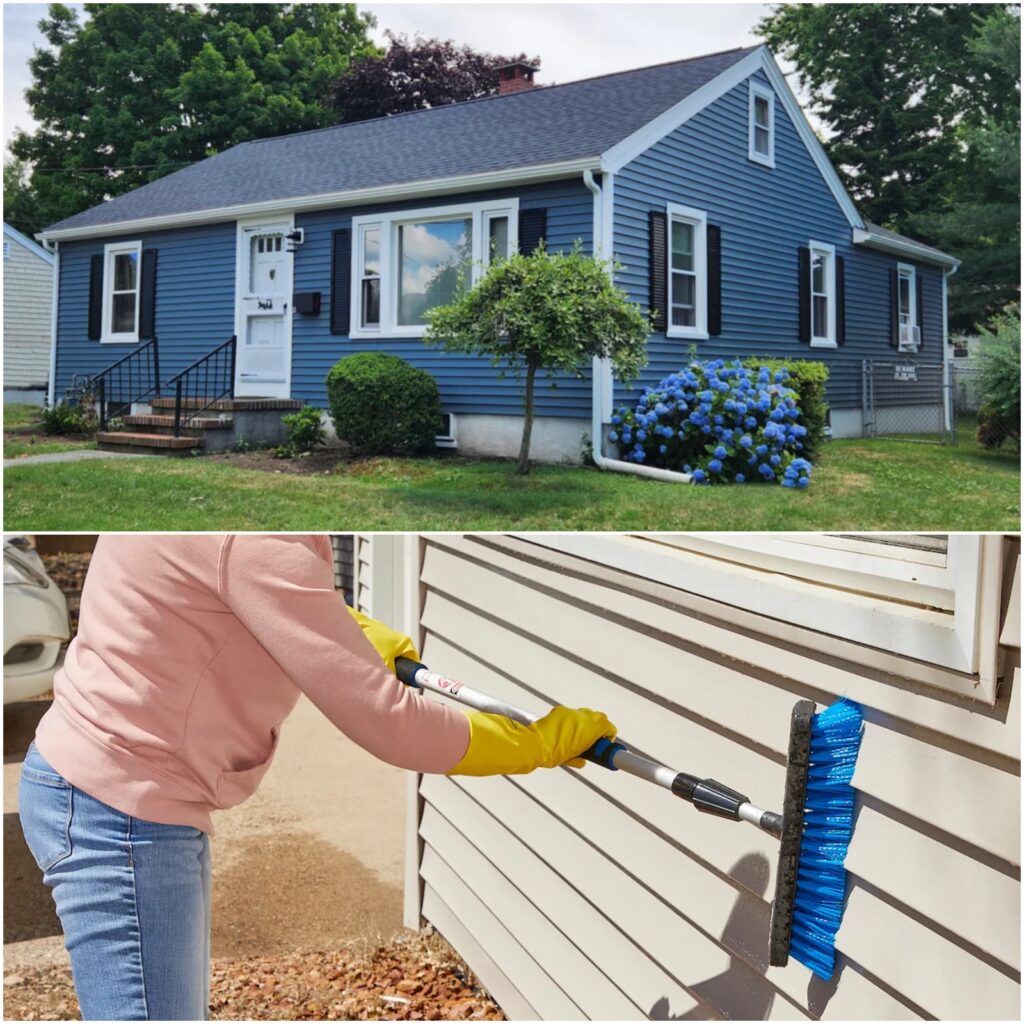
Preventative Maintenance Tips
1. Regular Inspections
- You may identify minor problems with home vinyl siding before they become major ones by performing seasonal inspections.
- Every spring and fall, check the siding for indications of mold, damage, or dirt buildup.
- You can preserve the look of your siding and avoid any issues like mold growth or water infiltration by keeping up with wear and tear.
2. Trimming Trees and Shrubs
- Another necessary measure is to keep plants and trees trimmed away from your siding.
- Over time, especially in windy situations, branches that scrape against the side may cause scratches or other damage.
- Pruning plants close to your house on a regular basis will shield the siding and lessen the amount of dirt, leaves, and other debris that might build up on it.
3. Gutter Maintenance
- Gutter cleanliness is essential for siding protection.
- Clogged gutters can cause water to overflow and run down your siding, which can cause mold development or water damage.
- Develop the practice of checking for leaks and cleaning out gutters at least twice a year.
- Gutter maintenance will keep your siding dry and in good shape by directing water away from your house.
4. Repainting Tips (If Applicable)
- The majority of vinyl siding does not need to be painted again, but if there is obvious fading or discoloration, you might want to think about it.
- Make sure the paint you choose is UV resistant and made especially for home vinyl siding to avoid fading in the future.
- This can be a fast and efficient way to update the outside of your house without having to replace all of the siding.
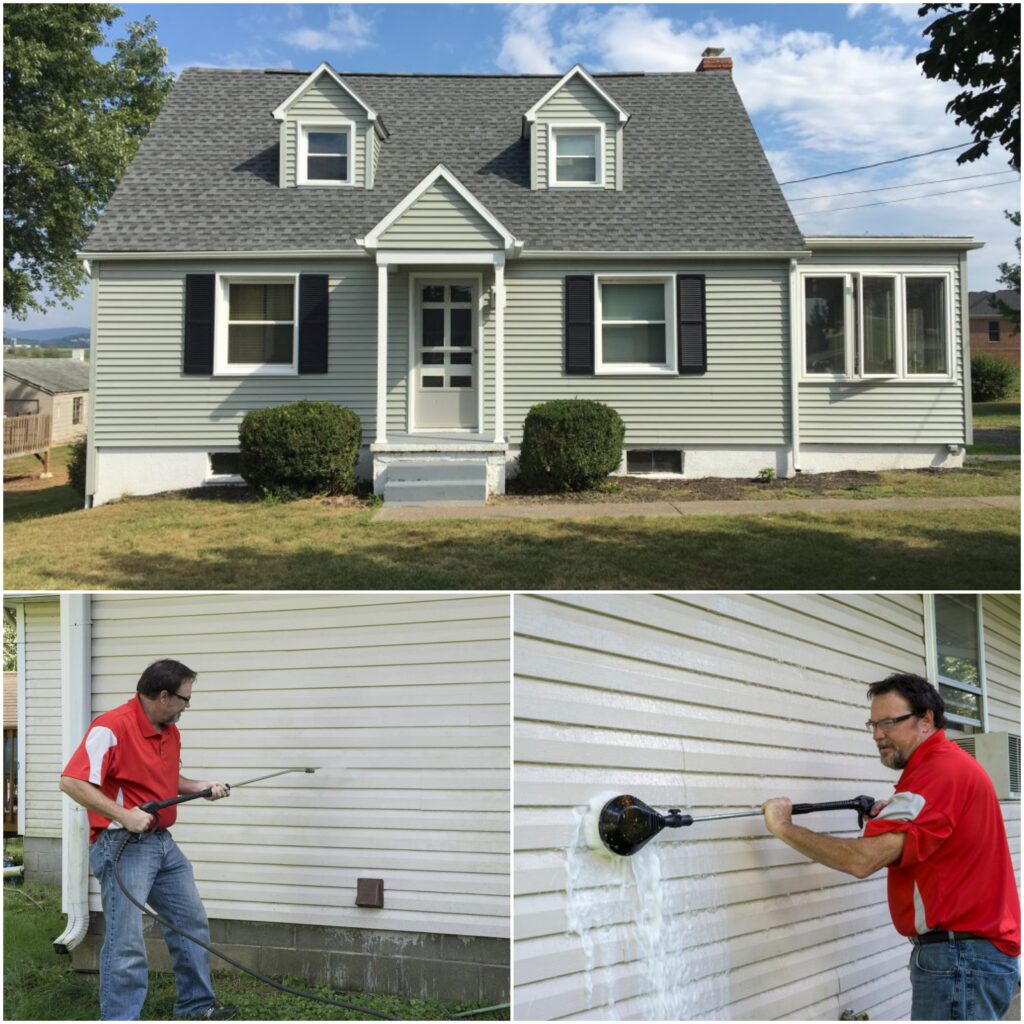
Signs of Serious Damage That May Need Expert Repair
- There are a few indicators that it is time to hire a professional, even though the majority of home vinyl siding problems may be resolved with routine maintenance.
- Inspect the siding for warping, noticeable cracks, and sizable mold or mildew spots that are difficult to remove.
- These problems can indicate deeper harm that calls for more than a DIY solution.
- Experts are able to determine the level of the issue and suggest suitable fixes to preserve the quality of your siding.
Bottom Line
This is the perfect period to act. To guarantee that your home vinyl siding lasts a long time and requires little upkeep, start by setting aside a day to have it inspected and cleaned. Your siding can stay in excellent shape for many years to come if you take a few basic steps every season.







